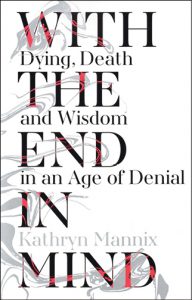By: Kathryn Mannix
Published by: Harper Collins Publishers, London, SE1 9GF – ISBN 978-0-00-821088-5
Available from: Whitcoulls, $29.99
Reviewed by: Kilian de Lacy
Dr Kathryn Mannix is a palliative-care physician and cognitive-behaviour therapist who has spent many years working with people who are suffering incurable, advanced illnesses.
Faced with her first dead person at age 18 during her first term at medical school, she learned early that dealing with the dying and their families was a special calling requiring skills that do not adorn the multitudes. She became fascinated by the process of dying, the varied ways by which the terminally ill strove to cope with the situation and the immense power of the palliative-care approach to soothe and support both the dying persons themselves and their loved ones.
Over her years in palliative care, Dr Mannix has become convinced that, for many people, the inevitable approach of death is frightening, even terrifying, leading to the increasingly strident demand for legalised assisted suicide or euthanasia. Some of this terror arises from the fact that, in this modern world, the natural process of death is fast becoming unfamiliar because so many people die in hospitals or homes and fewer and fewer go through their last stages at home in well-known surroundings and with their families and loved ones surrounding and supporting them.
With this in mind, Dr Mannix has written a book that will help both the ill and the healthy. By means of a series of actual stories of people she has encountered during her years in palliative care, she gradually unfolds her own understanding of the dying process and how to deal with the variations in approach exhibited by patients she has attended prior to, and during, the dying process.
The book is organised into sections, each beginning with a general observation on an aspect of death and dying and ending with some questions, which the reader can ask him/herself around this aspect. In between are the stories of patients, some deeply touching, others even amusing, but all related with a level of humanity, warmth, empathy and care that grips the reader and brings the characters and their situations to life (no pun intended) while at the same time dispelling the fear, which often surrounds the contemplation of death.
As an ex-nurse who has attended many deathbeds herself, I have no hesitation in strongly recommending this book to anyone, but particularly those who are engaged in pastoral ministry in homes and hospitals. It takes away the mystery surrounding physical death and gives valuable insights into ways of assisting those who are approaching the end of their lives to face this in peace.
A beautiful book, well worth the price.
Kilian de Lacy of Levin is a parishioner at Ss Mary and Joseph Hāto Mere me Hohepa.
